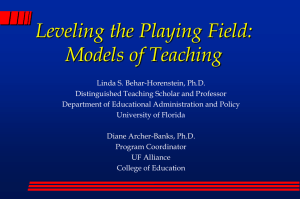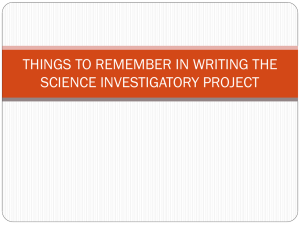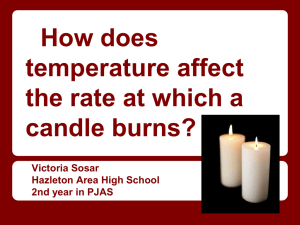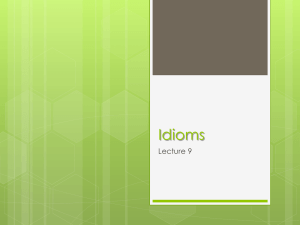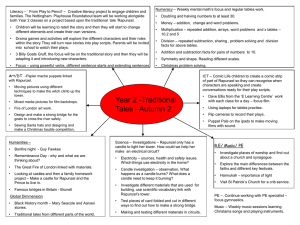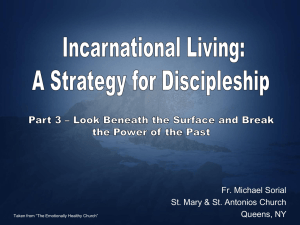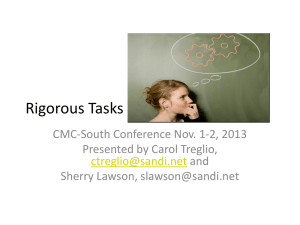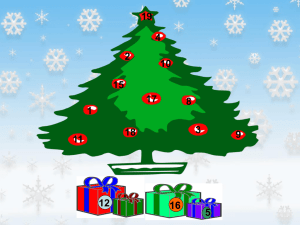Open Science Resources
advertisement
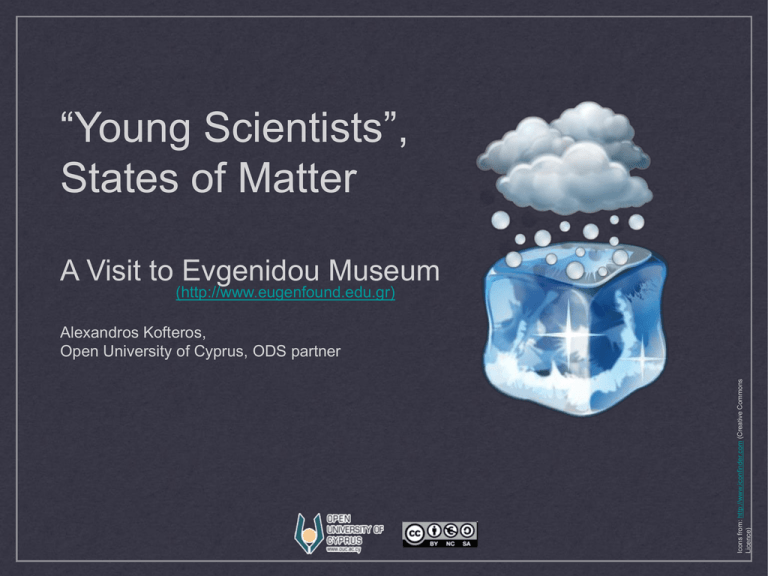
“Young Scientists”, States of Matter A Visit to Evgenidou Museum (http://www.eugenfound.edu.gr) Icons from: http://www.iconfinder.com (Creative Commons Licence) Alexandros Kofteros, Open University of Cyprus, ODS partner Changes in the states of matter Introductory Section and preparatory phase Short Description: Students will understand the 3 states in which matter can be found in nature, along with the changes that can occur from one state to the other. This Unit is divided in 3 parts: (a) observation- discussion in the classroom/science lab based on images/videos depicting the various states in which water can be found in nature. Water can be used in the lab to show how it can change from liquid to solid (ice) and back to liquid, and from liquid to gas through evaporation. Discussion on how each transformation occurs. (b) experimentation with the interactive units of Eugen Foundation in which the change of states on a molecular level is displayed for solid, liquid and gas states. (c) refection through additional activities (computer-based and paper-based), to solidify knowledge gained through the classroom activities and the museum visit, as well as for curing misconceptions of students. Keywords: Solid, Liquid, Gas, Evaporation, Boiling Point Target Audience: Primary Education Teachers Age Range: Students of Fourth Grade (8-9 year olds) Context: School, Museum Time Required: Before the visit – 120 mins During Visit – 120 mins After the visit – 80 mins Changes in the states of matter Introductory Section and preparatory phase • Technical Requirements: Computer and access to internet, video projector and interactive whiteboard (if possible) • Author’s background: Teacher since 1999, B.A. education with emphasis in Science Education, M.A. Curriculum & Instruction, Information Systems Doctoral Student • Connection with the curriculum: Fourth Grade (Primary School) Science (Greece and Cyprus) • Learning Objectives: Students should be able to understand the changes that occur when matter receives or loses heat. • Guidance for preparation: Teachers should have a computer connected to a video projector for the first activity (iceberg). Alternatively they could print or use a large picture. For the follow-up activities they should organise their students in groups of 3-4 students with simple material such as butter, candles, large spoon and matches (warning: matches should be used by the teacher). Α. Pre Visit Changes in the states of matter A: Pre Visit Teaching Phase 1 Questions Eliciting Activities - Provoke Curiosity Activity: Study the iceberg We introduce the image of an iceberg with clouds clearly visible. We ask students to describe exactly what they see in the picture. Previous Knowledge: Students are taught the Rain Cycle in Kindergarden and then again in First Grade. Through the discussion it is expected that students will be able to identify that: (a) clouds are formed from water that evaporates under heat (b) ice is created in cold climates with the solidification of water Πηγη:http://en.wikipedia.org/wiki/File:Sunset_iceberg_2.jpg Creative Commons Attribution-Share Alike 3.0 Clouds Ice Water Πηγη:http://en.wikipedia.org/wiki/File:Sunset_iceberg_2.jpg Creative Commons Attribution-Share Alike 3.0 Changes in the states of matter A: Pre Visit Teaching Phase 1 Questions Eliciting Activities – DEFINE QUESTIONS FROM CURRENT KNOWLEDGE Activity: Let’s talk about Icebergs New knowledge: We make guided questions to identify existing knowledge and also help our students acquire new knowledge (ie “where are icebergs found”, “what are icebergs made of”) Suggestion: with the help of Google Earth (http://earth.google.com) we project a model of the planet on the interactive whiteboard. We ask our students to discover where ice is located on the planet (North and South Pole). Through the study of the earth mode, we request our students to make a hypothesis on the coldest and the warmest parts of the planet. Since it is expected that they recognise the north and south poles as the coldest parts of the planet, we must guide them with more questions to identify the equatorial zone of Earth as (possibly) the warmest area. Additional questions should be asked such as ‘what would happen if we pulled an iceberg towards the center of the planet’? Changes in the states of matter A: Pre Visit Teaching Phase 1 Πηγη:http://earth.google.com Google Earth is a registered trademark of Goolgle Changes in the states of matter A: Pre Visit Teaching Phase 2 Active Investigation – PROPOSE PRELIMINARY EXPLANATION OR HYPOTHESES Activity: Transformation of Candle (solid) to liquid Students: Students are divided in groups of 3-4 according to their total number in the class. Material (per group): 1 short candle, one candle piece, one large metal spoon Research Question: Can the candle piece (sold) be turned into liquid? If yes, how could we accomplish that? Through a series of questions we could guide our students to suggest that we heat the candle piece so that it melts. Hypothesis: When we heat the candle, it melts and turns into liquid. When we allow the candle to cool down, it turns into solid again. Changes in the states of matter A: Pre Visit Teaching Phase 2 Active Investigation – PLAN AND CONDUCT SIMPLE INVESTIGATION Activity: From Solid to Liquid Note: similarly we could work with butter Investigation: Students place the candle piece in the metal spoon. Another whole candle is lit by the teacher, and students hold the spoon right above it so that the candle piece is heated. After a few minutes, the candle piece will start melting and turn into liquid. Observation: The candle piece is melted and turns from solid to liquid Extending the experiment: Students place the spoon containing the liquid candle on a safe place indicated by the teacher. After a few minutes they observe the content of the spoon. Observation: The liquid (melted candle) turns into solid. Changes in the states of matter A: Pre Visit Teaching Phase 2 Active Investigation – PLAN AND CONDUCT SIMPLE INVESTIGATION Conclusions: (a) with heat, a solid is turned into liquid (b) with the loss of heat, a liquid is turned into solid The same experiment can be conducted using butter or/and cheese. Our suggestion is to avoid using food for such experiments since -although usefulthey tend to destroy food. B. Visit Changes in the states of matter B. Visit Teaching Phase 3 Creation – GATHER EVIDENCE FROM OBSERVATION Eugen Foundation: The Museum features a planetarium and various collections including interactive exhibits that foster learning, with an emphasis in science education. Through the interaction with the exhibits, students can visualise not only when a change occurs in nature (ie with heat, liquid evaporates) but what happens on a molecular level. Changes in the states of matter B. Visit Teaching Phase 3 The Interactive Exhibit for States of Matter Changes in the states of matter B. Visit Teaching Phase 3 Creation – GATHER EVIDENCE FROM OBSERVATION Solid - Liquid - Gas: Through the use of the interactive exhibits, students can visualise what happens to matter on a molecular level when heat is gained or lost. Molecules are depicted as small spheres on the upper (screen) part of the exhibit, where their kinetic state is clearly shown based on the interaction by students (lower/raise heat). Changes in the states of matter B. Visit Teaching Phase 4 Discussion – EXPLANATION BASED ON EVIDENCE Kinetic State of Molecules: From the exhibits, it is expected that students observe the kinetic state of molecules in Solid, Liquid and Gas form and how they behave when heat is gained or lost. Through the comparison of all three screens, students should be able to discuss the behavior of molecules in all three states. We extend the questions so that students can discuss using terms such as ‘molecules’ and ‘density’-based on observations- to explain why it is so hard to pass a spoon through an ice cube as compared to a glass of water. Changes in the states of matter B. Visit Teaching Phase 4 Discussion – CONSIDER OTHER EXPLANATIONS Heat & Change of States of Matter: Based on previous experience, students know (from previous experiments) that water turns into ice (solid) when it is put in the freezer (loses heat). Ice, as a solid, will not allow any item (ie spoon) to pass through it easily unless it is ‘broken’. However, when we allow the ice to melt to water, a spoon is easily placed through it. Based on the exhibits, students should be able to explain this phenomena based on the molecular density. We extend the questions by asking “what will happen to water when we continue heating it”. We expect students to answer that water will turn into vapor and escape into the room. Common misconception: students should understand through measurements that water never rises above 100 oC. C. Post Visit Changes in the states of matter C. Post Visit Teaching Phase 5 Reflection – COMMUNICATE EXPLANATION Evaporation- Condensation- Melting: After the museum visit and the lessons prior to that, students should be able to reach conclusions and explain what happens to matter when heat is either gained or lost, on both the visible state of matter as well as the molecular. Students should be able to: (a) give explanations on what happens to matter when it gains/loses heat (b) how molecules behave when they receive / lose heat Changes in the state of matter http://lgfl.skoool.co.uk/content/primary/science/changes_temp_or_perm_1/inde Changes in the states of matter C. Post Visit Teaching Phase 5 Reflection – FOLLOW UP ACTIVITIES AND MATERIALS Heat & Change of State of Matter: Additional activities for the change of state of matter. Water, Orange Juice, Distilled Water). Use of same-quantity liquid in similar vessels with application of heat. Observations on the time and temperature until the liquid begins to evaporate (boiling point). Similar approach with same quantity liquids in the freezer and observation of the time required to turn the liquid to solid. Hypothesis on the boiling points and time required of different types of liquids from liquid state to gas and from liquid to solid. Evaluation: Evaluation happens concurrently with the lesson progress. With the end of the lessons (Post Visit) it is expected that a test will be undertaken by the students, either paper-based or online based (on an LMS such as Moodle). References Fourth Grade (Primary School) Science, Ministry of Education and Culture, Cyprus (“Changes in the state of matter”) Fourth Grade (Primary School) Environmental Education, Ministry of Education and Religion, Greece (“Changes in the state of matter”).


